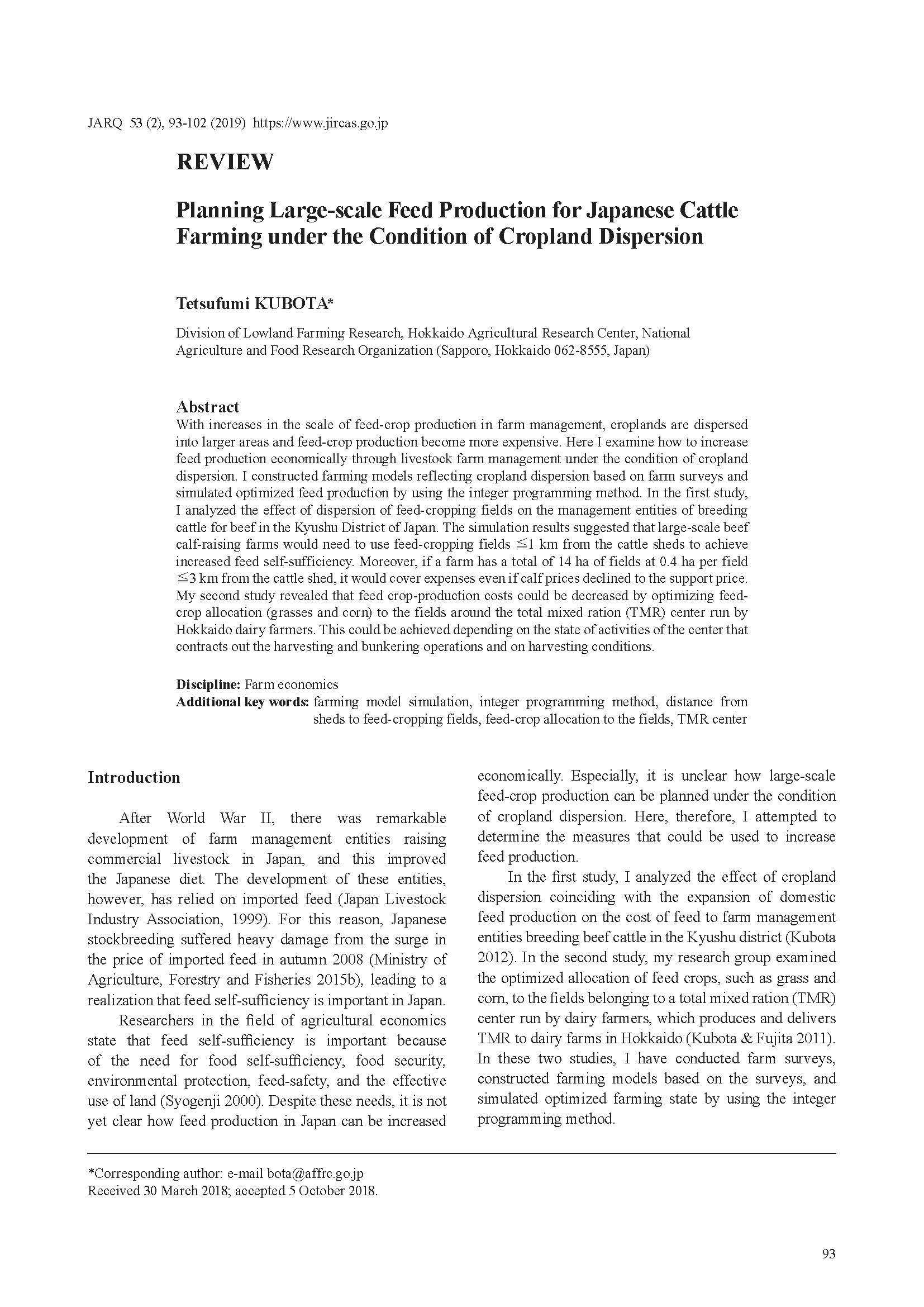Planning Large-scale Feed Production for Japanese Cattle Farming under The Condition of Croplands Dispersion
Japan Agricultural Research Quarterly
| ISSN | 00213551 |
|---|---|
| NII recode ID (NCID) | AA0068709X |

Full text
jarq53-2_93-102.pdf1.31 MB
With increases in the scale of feed-crop production in farm management, croplands are dispersed into larger areas and become more expensive. Here I examine how to increase feed production through livestock farm management under the condition of cropland dispersion. I constructed farming models reflecting cropland dispersion based on farm surveys and simulated optimized feed production by using the Integer Programming method. In the first study, I analyzed the effect of dispersion of feed-cropping fields on the management entities of breeding cattle for beef in the Kyushu District of Japan. The simulation results suggested that large-scale beef calf-raising farms would need to use feed-cropping fields ≦1 km from the cattle sheds to achieve increased feed self-sufficiency. Moreover, if a farm has a total of 14 ha of fields at 0.4 ha per field ≦3 km from the cattle shed, it would cover expenses even calf prices declined drastically.
My second study revealed that feed crop-production costs could be decreased by optimizing feed- crop allocation (grasses and corn) to the fields around the total mixed ration (TMR) center run by Hokkaido dairy farmers. This could be achieved depending on the center contracts out the harvesting and bunkering operations and on harvesting conditions.
My second study revealed that feed crop-production costs could be decreased by optimizing feed- crop allocation (grasses and corn) to the fields around the total mixed ration (TMR) center run by Hokkaido dairy farmers. This could be achieved depending on the center contracts out the harvesting and bunkering operations and on harvesting conditions.
| Date of issued | |
|---|---|
| Creator | KUBOTA Tetsufumi |
| Subject | Farming model simulation Integer programming method Distance from sheds to feed-cropping fields feed-crop allocation to the fields TMR center |
| Publisher | Japan International Research Center for Agricultural Sciences |
| Received Date | 2018-03-30 |
| Accepted Date | 2018-10-05 |
| Volume | 53 |
| Issue | 2 |
| spage | 93 |
| epage | 102 |
| DOI | 10.6090/jarq.53.93 |
| Language | eng |
